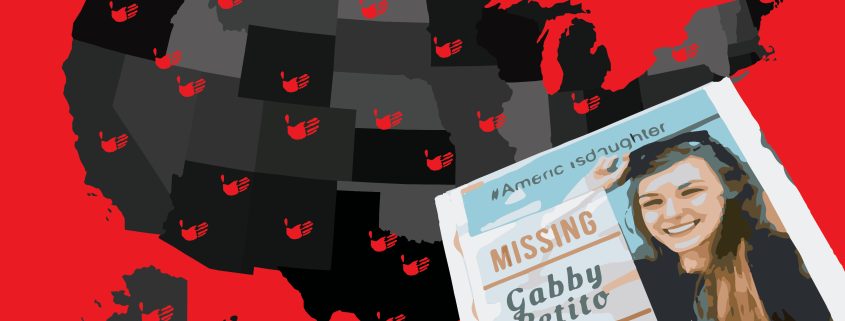‘Missing white woman syndrome’ points to ignored Indigenous women
Content warning: This article contains references to violence against women.
The disappearance and homicide of Gabby Petito gained widespread media attention across the United States — over six law-enforcement agencies searched for her and #GabbyPetito garnered more than 950 million views on TikTok.
On Sept. 19, police discovered her remains in Bridger-Teton National Forest in Wyoming. Police consider Petito’s fiance Brian Laundrie, who has been missing since the beginning of the investigation, a person of interest in the case.
However, would Petito’s case receive as much attention if she were a person of color, specifically an Indigenous woman? According to the Wyoming Statewide Report on Missing and Murdered Indigenous People, more than 700 Indigenous Americans — most of whom are women and girls — have been reported missing from Wyoming in the past decade.
The report also stated that in the U.S. overall, only 30% of homicide victims who were of Indigenous descent had newspaper media coverage, compared to 51% of white homicide victims. Of this 30%, 18% were Indigenous women homicide victims, which is the lowest amount of newspaper media coverage for all groups. Not to mention the fact that the rate of American Indian and Alaskan Native women who were murdered living on tribal lands exceeds the national average by 10 times.
Mainstream media prioritizes white women who have gone missing or been murdered, neglecting Indigenous women in the same position, which warrants changes in journalism and governmental entities to bring awareness to these victims as well.
Indigenous women face a crisis in the U.S. As of 2021, the National Crime Information Center reports that “about 1,500 American Indian and Alaska Native missing persons and nearly 2,700 women have been murdered.”
The lack of sensitivity from law enforcement affects these cases. According to the Sovereign Bodies Institute Report, families report inadequate communication, lack of cultural awareness and systemic violence committed against Indigenous communities. Additionally, critics attribute underreporting of cases to unfavorable relationships between tribal governments and outside law enforcement.
In the case of Petito, whose murder went viral due to internet sleuths, the media followed with intense enthusiasm. However, what occurred to her was common: Distressed loved ones brought a claim to the news media — outlets which are increasingly white. The Census Bureau reports marginalized racial and ethnic groups make up approximately 17% of newsroom staffs, despite composing 40% of the U.S. population.
How can we elevate the cases of Indigenous women who have gone missing and been murdered?
First, changes in leadership and focus in law enforcement need to happen. The Missing and Murdered Indigenous Women report recommended adequate funding and resources to officers in Native American communities combating this epidemic and further addressing systemic discrimination. For instance, Minnesota was the first state to implement a state’s office on Indigenous people who have gone missing and been murdered, hoping to establish “statewide protocol for investigations” and appropriate allocation of resources for tribal law enforcement.
Secondly, the media must improve how it reports cases of missing or murdered people. For instance, a Washington Post article described Petito as a “blue-eyed, blonde adventure seeker.” It weaponized this Eurocentric characterization to raise awareness of Petito, which speaks to how our culture reacts to missing women depending on their race. Responsible journalists can combat this inequity by avoiding such habits.
Lastly, mainstream media requires more Native American journalists and reporters. Native Americans comprise 1.7% of the U.S. population yet only 0.5% of individuals who work in the news industry. If not enough of a particular demographic work in this sector, it lacks necessary perspectives.
Report for America recently partnered with the Native American Journalists Association to support 19 indigenous journalists through 2021. Maggie Messitt, a senior advisor for Report for America, stated, “The history of U.S. journalism is largely a history of neglecting and even harming Indigenous communities.”
If more news organizations can do similar tasks, the media can boost Native American issues such as women who have gone missing or been murdered in press coverage. Reforms can bring greater attention to this epidemic in the media and government sectors.


